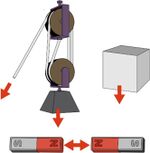Difference between revisions of "Chikara"
| Line 94: | Line 94: | ||
</ref>, |
</ref>, |
||
[[KanjiConfudal]] |
[[KanjiConfudal]] |
||
| − | |||
| − | <!-- |
||
| ⚫ | |||
| ⚫ | |||
| − | !--> |
||
Also, term [[Chikara]] may refer to sound, denoted with any of the characters |
Also, term [[Chikara]] may refer to sound, denoted with any of the characters |
||
| Line 104: | Line 99: | ||
[[⼒]], |
[[⼒]], |
||
[[力]], |
[[力]], |
||
| − | [[力]]. |
+ | [[力]]; in most of cases, it is either "ka" or "Chikara". |
Also, term [[Chikara]] may refer to an object, denoted with any of characters |
Also, term [[Chikara]] may refer to an object, denoted with any of characters |
||
| Line 110: | Line 105: | ||
[[⼒]] , |
[[⼒]] , |
||
[[力]] , |
[[力]] , |
||
| − | [[力]] . |
+ | [[力]] . Term [[Chikara]] has many meanings |
| − | |||
| ⚫ | |||
<ref> |
<ref> |
||
https://en.wikipedia.org/wiki/Chikara |
https://en.wikipedia.org/wiki/Chikara |
||
| Line 157: | Line 150: | ||
力(Force)是一種物理概念,是物體搭物體之間个相互作用。傳統物理觀念認爲,令到有質量物體加速(或者減速)个一種影響,就是力。我等無論對一件物體拉開或者推開,儕有力加垃物體丄。 |
力(Force)是一種物理概念,是物體搭物體之間个相互作用。傳統物理觀念認爲,令到有質量物體加速(或者減速)个一種影響,就是力。我等無論對一件物體拉開或者推開,儕有力加垃物體丄。 |
||
</ref><ref name="fi"> |
</ref><ref name="fi"> |
||
| − | https://www.chikaracrossfit.com Chikara Intramural CrossFit Open (2021)</ref>. Some of them refer to |
+ | https://www.chikaracrossfit.com Chikara Intramural CrossFit Open (2021)</ref>. Some of them refer to [[Energy]], [[Force]] or [[Power]]. |
==Encoding== |
==Encoding== |
||
| Line 464: | Line 457: | ||
However, at some software, the pictures of these two characters may look different. |
However, at some software, the pictures of these two characters may look different. |
||
| + | ==Basic meanings of [[Chikara]]== |
||
| − | ==Apology== |
||
| + | <center> |
||
| + | [[File:LaserLevels1.png|140px]] |
||
| + | [[File:Mass-spring-system.png|130px]] |
||
| + | [[File:NOVA II.jpg|120px]] |
||
| + | [[File:Mosquito-close-up-missouri-mosquitoes.png.jpeg|240px]] |
||
| + | <br> |
||
| + | Examples of the four basic meanings (according to the dictionaries) of term [[Chikara]]: |
||
| + | [[energy]], [[force]], [[power]], [[mosquito]]. |
||
| + | </center> |
||
| + | <br> |
||
| + | |||
| ⚫ | |||
| + | |||
| + | <center> |
||
| + | <big> |
||
| ⚫ | |||
| ⚫ | |||
| ⚫ | |||
| ⚫ | |||
| + | </center> |
||
| + | |||
| + | The construction above is not good (and not usual at all), because, as it is mentioned above, with the most of software, characters |
||
| + | [[⼒]], |
||
| + | [[カ]], |
||
| + | [[力]], |
||
| + | [[力]] |
||
| + | are difficult to distinguish from each other. |
||
| + | |||
| ⚫ | |||
| ⚫ | |||
| + | |||
| ⚫ | |||
| + | #[[Energy]] |
||
| + | #[[Force]] |
||
| + | #[[Power]] |
||
| + | #[[Mosquito]]. |
||
| + | |||
| + | There are |
||
| + | <center> |
||
| + | \( |
||
| + | 4!= \) [[Factorial]]\((4)=24\) |
||
| + | </center> |
||
| + | ways to assign the four values ( |
||
| + | [[X2F12]], |
||
| + | [[X30AB]], |
||
| + | [[X529B]], |
||
| + | [[XF98A]] ), id est, the [[chikara]] characters, to these four principal meanings. |
||
| + | |||
| + | The four meanings above are so different, that, from the context, the native Japanese speaker can easy guess, which meaning refers to each sentence. <br> |
||
| + | However, at learning of Japanese, the process of recognition is opposite: the reader looks at the possible meanings of the characters and tries to guess the context; in this case, the generic terms, like [[Chikara]], are essential in analysis of Japanese texts. |
||
| + | |||
| + | At the beginning of century 21, it is difficult to trace any preference in use of some of the four characters |
||
| + | [[⼒]], |
||
| + | [[カ]], |
||
| + | [[力]], |
||
| + | [[力]] |
||
| + | indicating each of the four meanings mentioned; the [[chikara]] characters seem to be used in the random order, confusing the readers; both Humans and robots, which try to analyze the text. |
||
| + | The confusion could be caused by the graphical similarity of the |
||
| ⚫ | |||
| + | [[Chikara]] characters (see the two pictures at the top of the article). The authors (even native Japanese) cannot distinguish the characters and so do not care, which of the [[Chikara]] characters is better to use. |
||
| ⚫ | |||
| ⚫ | |||
| ⚫ | |||
| ⚫ | |||
| + | With centuries, the graphical representation of characters change; some graphical representations become obsolete. |
||
| − | Term [[Chikara]] is necessary to refer this set or to element of this set, while it is difficult to guess, which one of these four characters should be mentioned. |
||
| + | The terms tend to become more specific, more sharp. |
||
| + | One may expect, that the graphical representation of the [[Chikara]] symbols will also change; looking at a |
||
| + | [[Chikara]] character, one should be able to identify it. |
||
| + | Then it will be possible, to assign the specific character to each of the four basic meanings of term [[Chikara]]. |
||
| + | Even if this does not happen, the generic term [[Chikara]] helps to adjust, correct the most usual meaning of the four characters. This is important, as any translation (even if made by a Human professional) from one language to another unavoidably change the meaning of the terms and sentences. Such misunderstanding may be reason for conflicts and wars. Systematization of knowledge of terms (in particular, knowledge about characters combined with term [[Chikara]]) is expected to help to avoid the errors. |
||
| − | Word [[Chikara]] allows to refer the generic image of the kanji (denoting, for example, a [[force]]), without to indicate the specific character, while its number may be net yet known or even is not yet assigned. |
||
==References== |
==References== |
||
Revision as of 16:41, 9 July 2021
Chikara is set of the four Unicode characters:
Also, term Chikara may refer to sound, denoted with any of the characters カ, ⼒, 力, 力; in most of cases, it is either "ka" or "Chikara".
Also, term Chikara may refer to an object, denoted with any of characters カ , ⼒ , 力 , 力 . Term Chikara has many meanings [12][13][4][5][14][15][7]. Some of them refer to Energy, Force or Power.
Encoding
Characters of Chikara are highly confusive.
Even a native Japanese speaker, looking at characters
⼒ ,
カ ,
力 ,
力 ,
is unlikely to answer:
Which of them is X2F12 ?
Which of them is X30AB ?
Which of them is X529B ?
Which of them is XF98A ?
This causes mistakes at the automatic processing of texts; in particular, at the search and at the replace. The original URLs of the first two pictures (at the top) may look similar, although these are different pictures: the first one represents the Katakana character, and the second shows the KanjiLiberal. The author M4RC0 tried to show the difference with bigger serifs at the ends of the 2-segment line in the pic of Chikara Katakana.
In order to avoid the errors, some programming is necessary.
The PHP program ud.t can calculate the Utf8 encoding or these four characters.
For the execution, file
uni.t also should be loaded. Then, command
php ud.t 2F12 30AB 529B F98A
reveals the encoding of these characters:
2F12 12050 ⼒ ⼒
Unicode character number 12050 id est, X2F12
Picture: ⼒ ; uses 3 bytes. These bytes are:
XE2 XBC X92 in the hexadecimal representation and
226 188 146 in the decimal representation
30AB 12459 カ カ
Unicode character number 12459 id est, X30AB
Picture: カ ; uses 3 bytes. These bytes are:
XE3 X82 XAB in the hexadecimal representation and
227 130 171 in the decimal representation
529B 21147 力 力
Unicode character number 21147 id est, X529B
Picture: 力 ; uses 3 bytes. These bytes are:
XE5 X8A X9B in the hexadecimal representation and
229 138 155 in the decimal representation
F98A 63882 力 力
Unicode character number 63882 id est, XF98A
Picture: 力 ; uses 3 bytes. These bytes are:
XEF XA6 X8A in the hexadecimal representation and
239 166 138 in the decimal representation
Phonetic and semantic
X2F12 ⼒ , KanjiRadical
Wictionary suggests [16] the following reading of character X2F12 ⼒:
リョク、
ちから
X30AB カ, Katakana
X30AB カ, Katakana has obvious pronunciation, "ka".
The same sound may denote also the insect-parasite 蚊, mosquito(s).[17]
X529B 力, KanjiLiberal
For character X529B 力, Russian site "Потеря Веса За 28 Дней" [18] suggests the following reading and meaning:
Kanji 力
..
Radical: ⼒ (19)
Strokes: 2
On: リョク、リキ、リイ ryoku, riki, rii
Kun: ちから chikara
Meaning: power, strength, strong, strain, bear up, exert
Grade: 1
JLPT: 4
In names: じから、つとむ jikara, tsutomu
Shape: idc
Elements: 丿
Look alike: 刃, 刀
Categories: N4 (JLPT)
Jisho [19] suggests longer description:
ちから
力
1. force; strength; might; vigour; vigor; energy
あなたは
わたし
私の
にばい
2倍の
ちから
力がある。You are twice as strong as I.
Noun
2. capability; ability; proficiency; capacity; faculty
あなたは
しゅうちゅう
集中する
ちから
力を
うしな
失ってしまった。You've lost the ability to concentrate.
Noun
3. efficacy; effect
チョコレートにはLDLの
さんか
酸化を
ぼうし
防止する
ちから
力がある。Chocolate acts to prevent LDL oxidisation.
Noun
4. effort; endeavours; endeavors; exertions
Noun
5. power; authority; influence; good offices; agency
あいての
きじゅん
基準を
うけい
受け入れるのは、そのあいての
ちから
力に
ふくじゅう
服従することだ。Accepting the other's norms is submitting to the other's power.
Noun
6. support; help; aid; assistanceSee also 力になる
Noun
7. stress; emphasis
たい
大した
ちから
力にはならないかもしれませんけど、
おうえん
応援します。It might not be worth much, but you have my support.
Noun
8. means; resources
Wikipedia definition
9. ForceIn physics, a force is any influence that causes an objec... Read more
Details ▸
りょく
力
strength; power; proficiency; ability
りき
力
Character X529B 力 seems to be most usual among other Chikara.
XF98A 力, KanjiConfudal
Article entitled 力 (XF98A) cannot be created in the usual way: the software confuses characters XF98A 力 and X529B 力.
The attempts to access 力 (XF98A) redirect to 力 (X529B).
In such a way, characters XF98A 力 and X529B 力 are forced to have the same meaning.
However, at some software, the pictures of these two characters may look different.
Basic meanings of Chikara
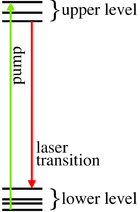
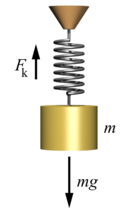
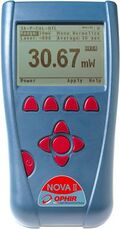
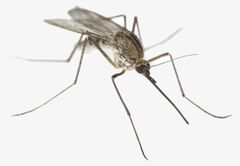
Examples of the four basic meanings (according to the dictionaries) of term Chikara:
energy, force, power, mosquito.
Term Chikara is defined to substitute the formally-correct, but absurdly cumbersom construction
The construction above is not good (and not usual at all), because, as it is mentioned above, with the most of software, characters ⼒, カ, 力, 力 are difficult to distinguish from each other.
Term Chikara is necessary to refer this set (or to an element of this set), while it is difficult to guess, which one of these four characters should be mentioned.
Word Chikara allows to refer the generic image of the Karakawa or kanji, without to indicate the specific character, while its number is not yet known (or even is not yet assigned).
According to the dictionaries cited, term Chikara has the four basic meanings:
There are
\( 4!= \) Factorial\((4)=24\)
ways to assign the four values ( X2F12, X30AB, X529B, XF98A ), id est, the chikara characters, to these four principal meanings.
The four meanings above are so different, that, from the context, the native Japanese speaker can easy guess, which meaning refers to each sentence.
However, at learning of Japanese, the process of recognition is opposite: the reader looks at the possible meanings of the characters and tries to guess the context; in this case, the generic terms, like Chikara, are essential in analysis of Japanese texts.
At the beginning of century 21, it is difficult to trace any preference in use of some of the four characters ⼒, カ, 力, 力 indicating each of the four meanings mentioned; the chikara characters seem to be used in the random order, confusing the readers; both Humans and robots, which try to analyze the text.
The confusion could be caused by the graphical similarity of the Chikara characters (see the two pictures at the top of the article). The authors (even native Japanese) cannot distinguish the characters and so do not care, which of the Chikara characters is better to use.
With centuries, the graphical representation of characters change; some graphical representations become obsolete. The terms tend to become more specific, more sharp. One may expect, that the graphical representation of the Chikara symbols will also change; looking at a Chikara character, one should be able to identify it. Then it will be possible, to assign the specific character to each of the four basic meanings of term Chikara.
Even if this does not happen, the generic term Chikara helps to adjust, correct the most usual meaning of the four characters. This is important, as any translation (even if made by a Human professional) from one language to another unavoidably change the meaning of the terms and sentences. Such misunderstanding may be reason for conflicts and wars. Systematization of knowledge of terms (in particular, knowledge about characters combined with term Chikara) is expected to help to avoid the errors.
References
- ↑ https://commons.wikimedia.org/wiki/File:カ-bw.png 日本語: 「カ」的笔顺。 English: Stroke order of "カ". Español: Orden de los trazos de "カ". made by me, M4RC0 using Photoshop. We are making this kind of picture following the protocol of the section : Bitmap Image (PNG)
- ↑ https://commons.wikimedia.org/wiki/File:力-bw.png English: This 力-bw.png image depicting the stroke order of the character 力 (Traditional Radical 019) in bw.png style. This image is part of the Commons:Stroke Order Project(zh-de-ja), a project to create a complete set of images depicting the right stroke order (Protocols). Few 214 Kangxi radicals have been completed by hand for few styles. As of 2021, more scalable SVG-based approach exists : help should now go to AnimeCJK and MakeMeAHanzi.
- ↑ https://commons.wikimedia.org/wiki/File:Force_examples.svg A few images illustrating forces Date 26 August 2010, 15:30 (UTC) Source Force.png and File:Compound_pulley.svg Author Force.png: Penubag derivative work: Arnaud Ramey (talk) Applications-graphics.svg This is a retouched picture, which means that it has been digitally altered from its original version. Modifications: vectorized. The original can be viewed here: Force.png: Force.png. Modifications made by Arnaud.ramey. I, the copyright holder of this work, hereby publish it under the following license: Public domain I, the copyright holder of this work, release this work into the public domain. This applies worldwide.
- ↑ 4.0 4.1 https://zh.wikipedia.org/wiki/力 [[力[编辑] 维基百科,自由的百科全书 ..
- ↑ 5.0 5.1 https://zh-yue.wikipedia.org/wiki/力 力 出自維基百科,自由嘅百科全書 跳去導覽跳去搵嘢 Disambig.svg 想搵第個意思,請睇「力 (搞清楚)」。 唔同種類嘅力 力(Force)係一種物理概念,係物體同物體之間嘅相互作用。傳統物理觀念認為,令到有質量物體加速(或者減速)嘅一種影響,就係力。我們無論對一件物體拉開或者推開,都有力加諸喺物體上。
- ↑
https://en.wikipedia.org/wiki/Chikara_(professional_wrestling)
https://chikararesults.tumblr.com Chikara results (2020-2021) - ↑ 7.0 7.1 https://www.chikaracrossfit.com Chikara Intramural CrossFit Open (2021)
- ↑ https://util.unicode.org/UnicodeJsps/character.jsp?a=2F12 ⼒ 2F12 KANGXI RADICAL POWER Han Script id: allowed confuse: 力 , 力 , カ
- ↑ https://util.unicode.org/UnicodeJsps/character.jsp?a=30AB カ 30AB KATAKANA LETTER KA Katakana Script id: restricted confuse: ⼒, 力, 力
- ↑ https://util.unicode.org/UnicodeJsps/character.jsp?a=529B 力 529B CJK UNIFIED IDEOGRAPH-529B Han Script id: restricted confuse: ⼒, 力, カ
- ↑ https://util.unicode.org/UnicodeJsps/character.jsp?a=F98A 力 F98A CJK COMPATIBILITY IDEOGRAPH-F98A Han Script id: allowed confuse: ⼒, 力, カ
- ↑ https://en.wikipedia.org/wiki/Chikara 力, (Chikara), the Japanese word meaning power, capability, or influence The Four-horned Antelope, Tetraceros quadricornis Chikara (given name) Chikara (instrument), a stringed instrument from India. Chikara-mizu (力水), a ritual at the beginning of a sumo match Chikara (album), a compilation album by rock band Kiss Chikara (professional wrestling), a professional wrestling organization
- ↑ https://en.wiktionary.org/wiki/力 See also: カ, 九 and 丸 Wikipedia has articles on: 力 (Written Standard Chinese?) 力 (Cantonese) 力 (Gan) li̍t (Hakka) la̍t (Min Nan) 力 (Wu)
- ↑ https://gan.wikipedia.org/wiki/力 力 跳至導覽跳至搜尋 物理來話,傳統上讓有質量嗰物體加速(或者減速)嗰一種影響就係力。力係矢量,定義係動量改變嗰速率,佢咁有方向跟到佢。國際標準單位係牛頓。
- ↑ https://wuu.wikipedia.org/wiki/力 力 吴语维基百科,自由个百科全书 跳到导航跳到搜索 弗同種類个力 力(Force)是一種物理概念,是物體搭物體之間个相互作用。傳統物理觀念認爲,令到有質量物體加速(或者減速)个一種影響,就是力。我等無論對一件物體拉開或者推開,儕有力加垃物體丄。
- ↑ https://ja.wiktionary.org/wiki/⼒ ⼒ ナビゲーションに移動検索に移動 目次 1 部首 1.1 参照 2 文字情報 2.1 文字コード 部首[編集] フリー百科事典ウィキペディアに 力部 の記事があります。 力(リョク、ちから) 漢字の部首の一つ。力量や力を入れる行為に関する漢字の意味を表し、力部を構成。常用漢字では二画。 参照[編集] Wiktionary:漢字索引 部首 力。 文字情報[編集] 文字コード[編集] Unicode 16進: 2F12 ⼒ 10進: 12050 ⼒
- ↑ https://ja.wikipedia.org/wiki/%E3%82%AB https://ja.wikipedia.org/wiki/カ カ(蚊)は、ハエ目(双翅目)糸角亜目カ科(学名: Culicidae)に属する昆虫である。ナガハシカ属、イエカ属、ヤブカ属、ハマダラカ属など35属、約2,500種~約3000種が世界に存在し、うち日本は100種程度である(東京都福祉保健局による)[1]。ヒトなどから血液を吸う吸血動物であり、種によっては各種の病気を媒介する衛生害虫である。
- ↑ https://japanese-words.org/en/kanji/view/2867 Kanji 力 Top 力 Radical: ⼒ (19) Strokes: 2 Drawing Click to see kanji drawing Copybook On: リョク、リキ、リイ ryoku, riki, rii Kun: ちから chikara Meaning: power, strength, strong, strain, bear up, exert Grade: 1 JLPT: 4 In names: じから、つとむ jikara, tsutomu Shape: idc Elements: 丿 Look alike: 刃, 刀 Categories: N4 (JLPT)
- ↑ https://jisho.org/search/力 Words — 116 found ちから 力 common word jlpt n4 wanikani level 1 Play audio Links Noun 1. force; strength; might; vigour; vigor; energy あなたは わたし 私の にばい 2倍の ちから 力がある。You are twice as strong as I. Noun 2. capability; ability; proficiency; capacity; faculty あなたは しゅうちゅう 集中する ちから 力を うしな 失ってしまった。You've lost the ability to concentrate. Noun 3. efficacy; effect チョコレートにはLDLの さんか 酸化を ぼうし 防止する ちから 力がある。Chocolate acts to prevent LDL oxidisation. Noun 4. effort; endeavours; endeavors; exertions Noun 5. power; authority; influence; good offices; agency あいての きじゅん 基準を うけい 受け入れるのは、そのあいての ちから 力に ふくじゅう 服従することだ。Accepting the other's norms is submitting to the other's power. Noun 6. support; help; aid; assistanceSee also 力になる Noun 7. stress; emphasis たい 大した ちから 力にはならないかもしれませんけど、 おうえん 応援します。It might not be worth much, but you have my support. Noun 8. means; resources Wikipedia definition 9. ForceIn physics, a force is any influence that causes an objec... Read more Details ▸ りょく 力 common word Show 12 collocations Links Suffix 1. strength; power; proficiency; ability Details ▸ りき 力 Links Noun 1. strength; power; proficiency; ability Noun - used as a suffix 2. the strength of ... people; the strength of ... menafter a number of people, e.g. 十人力
